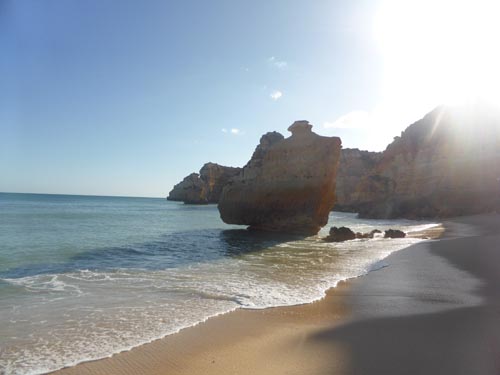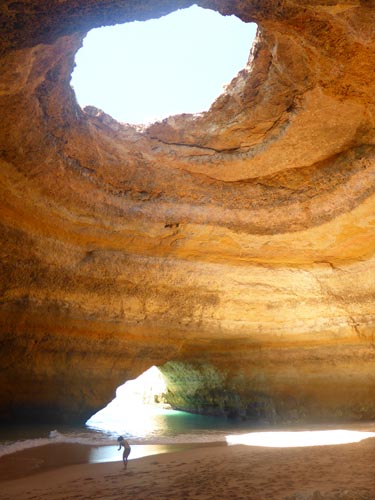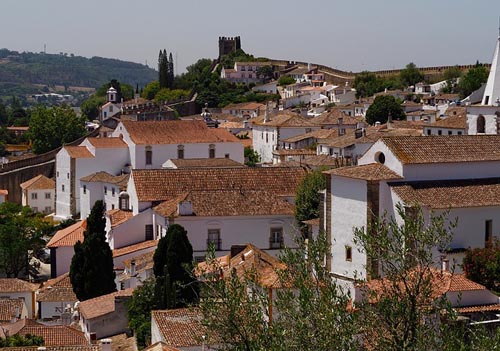Sights
Portugal is a beautiful country and very welcoming. From the North to the South and from the East to the West you will find great points of interest; you'll come across beautiful cities, beautiful beaches, castles, temples and national parks in this corner of Europe.
Lisbon
The capital of Portugal is one of the oldest cities in the world, reaching its peak at the time of the discoveries (15th to 18th centuries). Lisbon is a modern city with many interesting sights. Built on seven hills, this beautiful city is divided into 5 neighborhoods with a charm of their own.
Bairro Alto & Chiado are two neighborhoods with indistinct boundaries. Stroll through the narrow streets of Bairro Alto and enjoy the neighborhood where the "heart" of the city's nightlife beats. In the neighboring district of Chiado, take a stroll through Rua Garett's shops; sip your coffee at the historic Café A Brasileira, where the poet Fernando Pessoa used to drink it. Pay also a visit to the Monastery of Karmos, which was built in the 14th century, suffered serious damage from the earthquake of 1755, while today the Archaeological Museum of Lisbon is housed there.
The central district of the city is Baixa, which stretches from the Tagus Bank to Avenida da Liberdade Boulevard. You can start your walk south of Commercio Square and cross the Rua Augusta Arch to reach the beautiful Rossio Square via the paved Rua Augusta. If you want to see the city up close go to the Santa Zusta lift.
The most special and perhaps the most beautiful neighborhood of Lisbon is Alfama, an area of intense ethnicity, as it is the old Arab quarter of the city. Two of the capital's main sights are in Alfama, the castle of St. George (Castelo de São Jorge), with stunning views of the city and the river Tagus and the Lisbon cathedral. Beyond the monuments and temples, it's worth wandering the picturesque alleys of the old town with colorful graffiti and listening to traditional fado music, during night, in one of the small taverns in the area.
On the southwest side of the city about 8 kilometers from the center, you will find the Belém district, a district that was the base of Portuguese explorers at the time of the discoveries. You must definitely visit the Belem Tower, perhaps the most famous Lisbon monument, built as a fortification against the invaders in the 16th century. Nearby, you will find the Discovery Monument, erected in 1960, to honor the memory of Portuguese explorers. Another remarkable monument and true architectural jewel is the Monastery of the Hieromonks, which was declared a UNESCO World Heritage Site in 1983 along with the Belem Tower.
However, in close proximity to the center of Lisbon, you may find great
sights that are definitely worth a visit. The unique Sintra, with its magnificent castles and palaces, is an area not to
be missed. To get there you can take the train from Rossio - Lisboa station and
within half an hour you will be there. Ceramic
tiles - Azulejos, which you will see throughout the country adorn several
buildings, are a hallmark of Portuguese culture. The Art of Azulejo was
transferred to the Iberian Peninsula by the Moors in the 14th century. The National Museum of Azulejos is a
good choice for those who want to get to know the history of this particular
art and admire its impressive collection.
Porto
Porto is located in the northern part of Portugal and is the second largest city after Lisbon. It is a magnificent city with unique architecture, character and exceptional wine, all of which helped to be included in the UNESCO World Heritage List in 1996.
Begin your city tour from the beautiful Ribeira Quarter, starting at São Bento Train Station (known for its stunning decoration of 20,000 Azulejos ceramic tiles) and crossing the picturesque straits, end at Ribeira Square on the banks of the river D. Three beautiful churches that also lie north of the river and worth a visit are the Porto Cathedral, Saint Ildefonso Church and the multi-photographed Igreja do Carmo. One of the most beautiful bookstores in the world, Livraria Lello, is located in Porto and hordes of tourists flock to it paying an entrance fee as well.
Crossing the iconic Ponte Luís I and admiring the magnificent views of Porto, you will find yourself in the Vila Nova de Gaia district with its "caves" where the world famous Porto wine is stored and matured. A great place to enjoy the view and the sunset in the city is the Mosteiro da Serra do Pilar.
Algarve
Algarve is the southernmost part of Portugal and the most enchanting, with beautiful cities, picturesque villages, national parks, castles and of course the beautiful beaches. It is one of Europe's most popular summer destinations and not unjustly. The province includes the cities of Portimao, Lagos and the capital Faro. Smaller cities like Tavira, Albufeira and Loulé are also worth paying a visit. Yet, the beaches are the ones stealing the show and really monopolizing the interest of the tourists and the Portuguese themselves. On the Mediterranean coast you will find the most beautiful beaches such as Praia da Marinha, Praia dos Três Irmãos and Praia de Benagil from wherever you can rent a canoe or sup to reach the unique Benagil cave.
Apart from the two big cities and the wonderful southern part of the Algarve, Portugal has many places to visit. If you are fond of medieval towns and castles you are in the right place, as there are plenty of medieval places in the country, such as Evora, Obidos, Marvao and Montsaraz. But even if you like cities and history, you can choose places like Braga, the religious capital of Portugal, Coimbra where it was the capital of the country from 1139 to 1260, to see the city's oldest university in Europe and finally Aveiro for boating in the city's canals and relaxing in its picturesque alleys.









